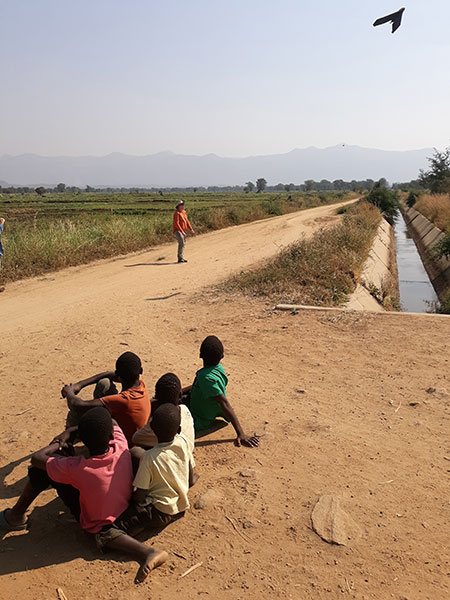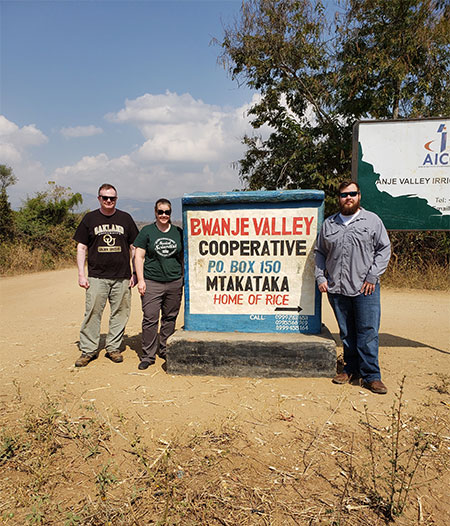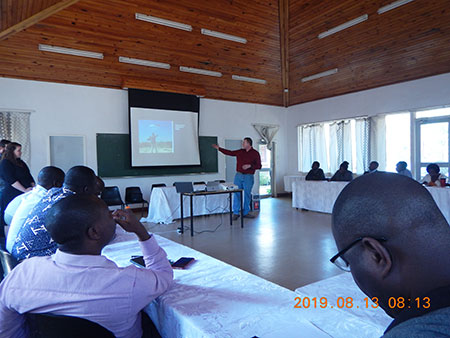- YouTube
- TikTok
Anthropology professor deploys drone to fight disease in Africa
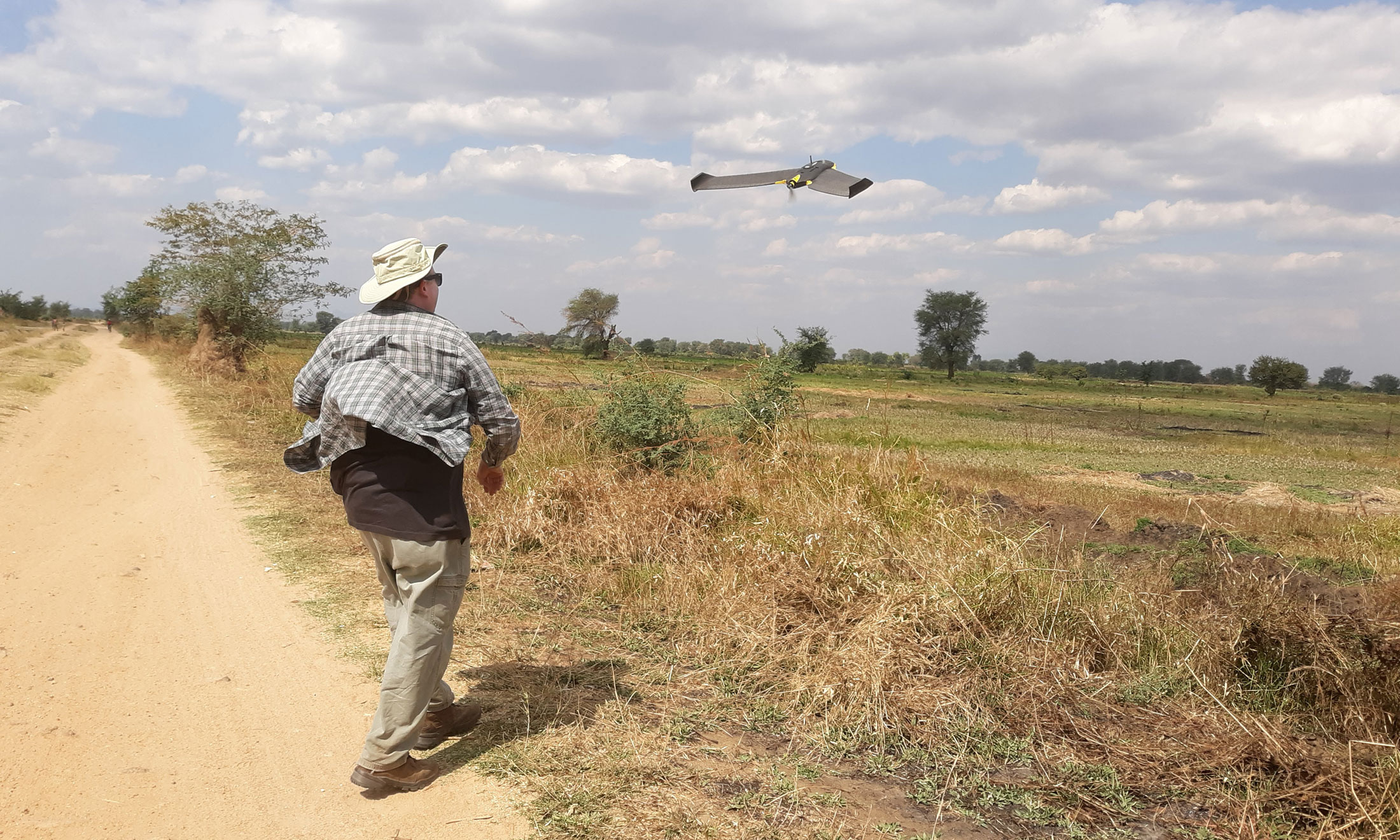
Professor Carroll flies a drone over the Bwanje Valley Irrigation Scheme in Malawi.
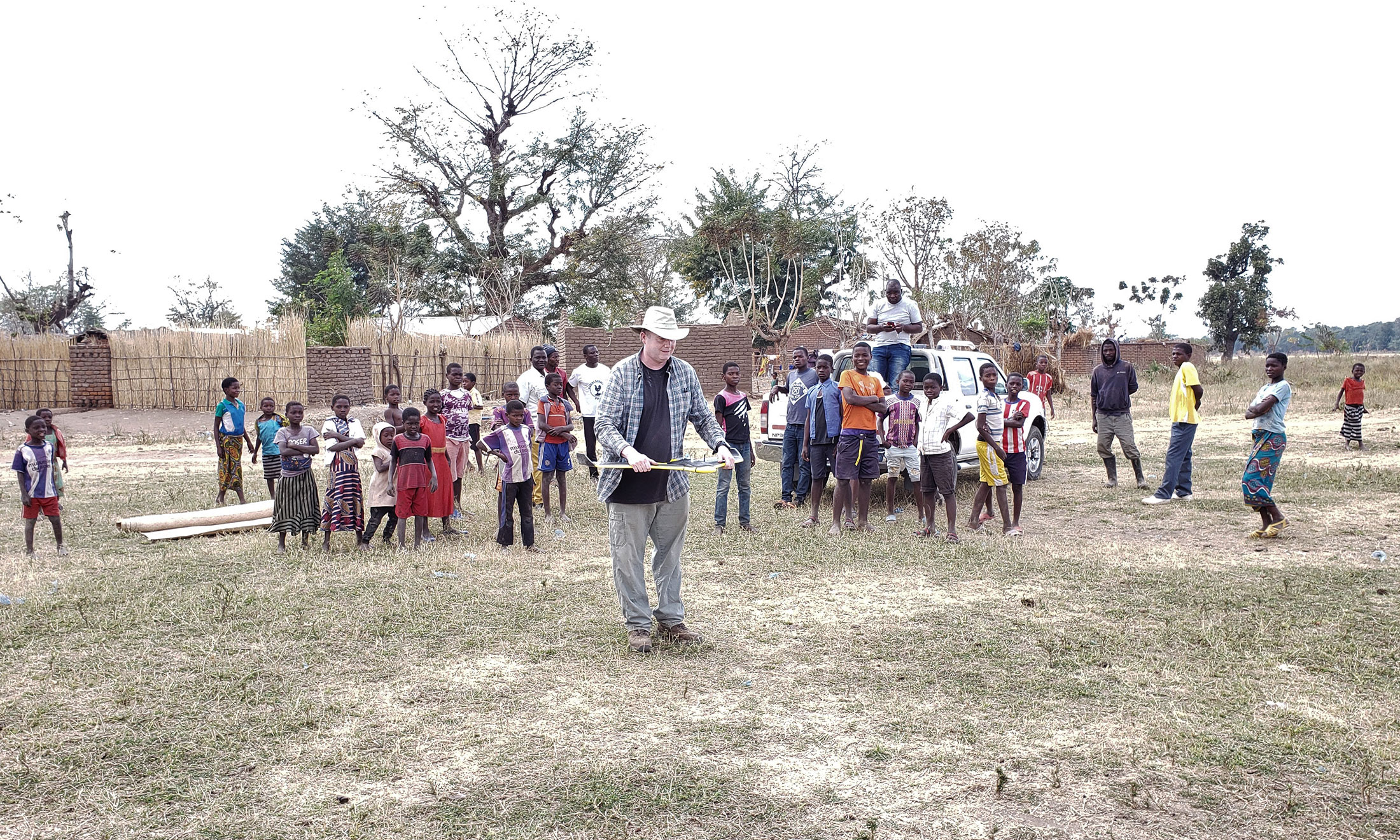
Professor Jon Carroll prepares to fly a drone to capture aerial images of the Bwanje Valley Irrigation Scheme in Malawi.

Professor Carroll flies a drone over the Bwanje Valley Irrigation Scheme in Malawi.

Professor Jon Carroll prepares to fly a drone to capture aerial images of the Bwanje Valley Irrigation Scheme in Malawi.

This summer, Oakland University Professor Jon Carroll went to Africa to explore the role drones can play in combating the spread of malaria. The project, which is funded by the United States Agency for International Development, uses precision agriculture to support public health, environmental protection, food security and other efforts.
Children look on as Professor Jon Carroll flies a drone over the Bwanje Valley Irrigation Scheme in Malawi. |
The research team spent nine days in the East African nation of Malawi, where they collected data to assess the effectiveness of drone imagery in detecting areas of standing water – common breeding grounds for mosquitoes, the chief transmitters of malaria.
“You have to compare the aerial imagery with data collected on the ground,” Carroll explained. “That’s how you gauge the reliability of the drone photos.”
Although data analysis is not yet complete, Carroll said drones are a promising tool to curb the threat of a disease that, according to the World Health Organization, afflicted more than 200 million people in 2017 – with more than 90 percent of cases and deaths occurring in Africa.
Carroll, who is a FAA-licensed drone pilot, registered professional archaeologist and assistant professor in OU’s Department of Sociology, Anthropology, Social Work and Criminal Justice, explained that drones allow researchers to capture high-resolution images that far exceed the quality of those produced by satellites.
“With standard satellite imagery, the smallest object you can detect is around 7 feet by 7 feet,” he said. “With drone imagery, the smallest object you can detect is about 3 inches. So in terms of distinguishing objects from each other, and detecting different landscape features, drone imagery is far superior.”
Pictured from left, Jon Carroll, April Frake and Brad Peter are collaborating on a precision agriculture project to combat the spread of malaria. |
Carroll and fellow researchers April Frake and Brad Peter, both from Michigan State University, centered their efforts on Malawi’s Bwanje Valley Irrigation Scheme due to the markedly high rates of malaria found there.
“Malaria is endemic to the region, but it’s not evenly distributed,” Carroll said. “The people that live around this irrigation scheme are at far greater risk than people who live down the road.”
The researchers hope drone imagery can help irrigation engineers and agriculturalists develop strategies that allow water to flow through the irrigation scheme more efficiently, avoiding stagnation which enables mosquitoes to breed.
The communities that surround the irrigation scheme are heavily dependent on water-intensive crops, mainly rice, which causes puddles to form in the fields. Carroll noted that the research team worked closely with local residents to collect the aerial and ground data.
“I was really impressed by how collaborative and engaged they were in helping us do our work,” he said. “They have intimate knowledge of the local landscape, as well as the social, economic and political environment. All of those factors play into how the irrigation scheme is run.”
Professor Carroll speaks to students and faculty members at Malawi’s Lilongwe University of Agriculture and Natural Resources. |
Along with the field work, the team also held lectures on their research at Malawi’s Lilongwe University of Agriculture and Natural Resources. The lectures were well attended by faculty and students – another sign of strong community engagement, which Carroll said is vital to the success of the project.
“If this technology is going to grow and propagate, these are the folks who are going to do it,” he said. “They are the ones who will build on this research and use it to improve the lives of potentially millions of people.”
This report is made possible by the support of the American people provided to the Feed the Future Innovation Lab for Sustainable Intensification, through the United States Agency for International Development (USAID). The contents are the sole responsibility of the authors and do not necessarily reflect the views of USAID or the United States Government. Program activities are funded by USAID under Cooperative Agreement No. AID-OAA-L-14-00006.


 September 10, 2019
September 10, 2019